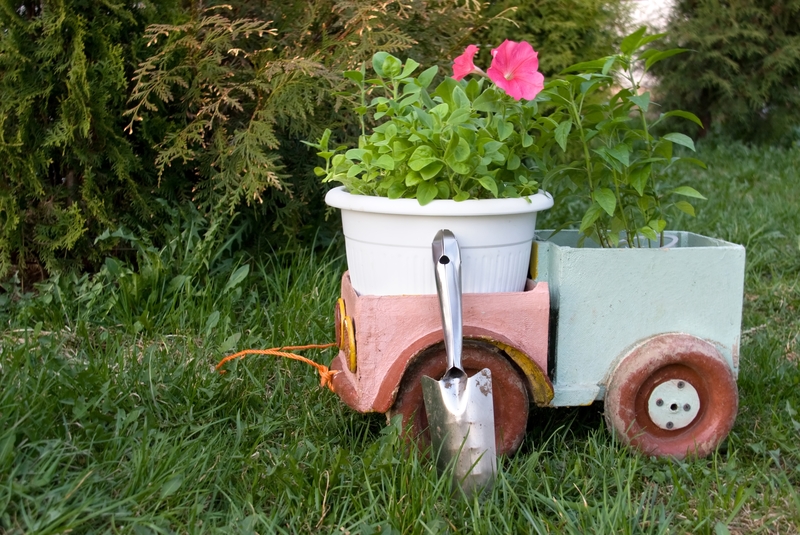How to Simplify Office Spaces for Maximum Productivity
Productivity in the workplace depends on several factors, but one of the most influential is the design and organization of the office space. In today's fast-paced business environment, simplifying office spaces has become an essential strategy for companies and individuals who seek a more efficient, focused, and energetic work atmosphere. But how can you simplify your office effectively while balancing both style and function? In this comprehensive guide, we will explore actionable steps and expert tips to simplify office spaces for maximum productivity.
Why Simplifying Office Space Matters
Research has shown that cluttered and disorganized workspaces can cause stress, distract attention, and decrease efficiency. On the other hand, a well-organized and simplified office environment fosters clear thinking, sparks creativity, and significantly enhances team productivity.
- Reduces Stress: An organized environment helps minimize distractions and stress.
- Enhances Focus: Fewer distractions equal higher concentration levels.
- Boosts Morale: A clean, simple office lifts spirits and encourages motivation.
- Improves Efficiency: It's easier to find what you need when your office is simplified.
- Promotes Collaboration: Well-designed spaces foster better team interaction and communication.

Assessing Your Current Office Space
Before you start making changes, it's important to assess your current office set-up. Ask yourself:
- Are there too many unused or unnecessary items?
- Does the space feel cramped and cluttered?
- Is the furniture functional and comfortable?
- Is it easy for team members to find information and tools?
- Do you have dedicated zones for different tasks?
Identifying weak points will help you create a structured plan to simplify your office for maximum productivity.
Decluttering: The First Step to a Simplified Office Space
To simplify office environments, begin with decluttering. The process clears out unnecessary items, which can empower productivity right from the start.
1. Remove Unused Furnishings and Equipment
Outdated equipment, broken furniture, and unused filing cabinets take up precious space. Consider selling, donating, or recycling these items to create a more open and inviting environment.
2. Go Digital Whenever Possible
Paper documents, old files, and stacks of office supplies create visual clutter. Switch to digital storage solutions to minimize paper use and achieve a streamlined workspace. Invest in:
- Cloud storage and document sharing applications
- Scanners for digitizing important records
- Secure shredders for disposing of sensitive old documents
3. Implement the "One In, One Out" Rule
For every new item introduced to your office, remove one that is no longer needed. This will prevent new clutter from building up over time.
Smart Office Layouts for Enhanced Productivity
Office space layout greatly impacts workflow and communication. A smart, flexible layout reduces wasted movement and makes collaboration easier.
Open vs. Private Workspaces
- Open Layouts: Great for teams needing frequent communication. Ensure there are still quiet zones for focused work.
- Private or Semi-Private Layouts: Ideal for tasks requiring deep focus or confidentiality.
Experiment with hybrid layouts that combine both elements to suit different work styles and needs.
Rearrange for Function and Flow
- Place frequently used tools and supplies within arm's reach.
- Keep walkways clear of obstacles for better mobility.
- Designate zones for different activities (meetings, focused work, breaks).
Consider Modular and Multi-Functional Furniture
Modular desks, folding chairs, and movable partitions allow you to reconfigure office spaces as needs change, keeping the environment dynamic and flexible.
Organizational Tools and Techniques
Investing in the right organizational tools is crucial for sustaining a simplified and productive workplace.
Effective Storage Solutions
- Use vertical storage like shelves to save on floor space.
- Install drawer organizers and desktop trays for small items.
- Clear container boxes help you see contents at a glance.
Label Everything
Clear labeling prevents items from being misplaced and saves time searching. Use consistent labeling systems for files, cupboards, and drawers.
Personalize, But Don't Overdo It
Allow employees to personalize their desks with a few items, but encourage minimalism to preserve the simplified office aesthetic and avoid unnecessary distractions.
Improve Lighting and Air Quality
Workspace environments with good lighting and fresh air positively influence productivity and well-being.
Natural and Task Lighting
- Maximize natural light by keeping windows unobstructed.
- Add LED or daylight-mimicking lamps for dull areas.
- Task lighting at workstations helps reduce eye strain.
Ventilation and Indoor Plants
Good air quality is vital. Use air purifiers and introduce indoor plants which can naturally filter toxins and create a calming workspace.
Minimize Distractions for Maximum Workflow
Simplified office spaces help reduce both visual and auditory distractions, directly increasing productivity.
Designate Quiet Zones
Create designated quiet areas for concentrated work. Use acoustic panels, noise-cancelling headphones, or white noise machines to help maintain focus.
Declutter Digital Spaces
Don't forget your computer desktop. Delete old files, organize digital folders, and remove rarely used applications. Digital clutter can be just as distracting as physical clutter.
Implement Clear Policies and Routines
Establishing clear organizational policies and routines helps maintain a clutter-free and productive office over the long term.
- Regular Cleaning Schedules: Assign cleaning tasks or hire professionals to keep the office tidy.
- Document Retention Policies: Specify how long documents are kept before being digitized or shredded.
- Shared Responsibilities: Encourage all team members to keep communal areas clear and organized.
Leverage Technology for Simpler Workflows
Embrace digital transformation to streamline processes and cut excess from daily workflows.
Use Project Management Tools
- Adopt tools like Asana, Trello, or Slack for better task management and communication.
- Automate routine processes through software for payroll, scheduling, and inventory.
- Schedule regular digital audits to remove unused apps and subscriptions.
Adopt Minimalist Design Principles
Minimalist office design isn't about being bare or boring; it's about intentional use of space and resources to promote clarity and efficiency.
Neutral Colors and Simple Decor
- Opt for neutral colors like white, gray, or soft beige to promote calmness.
- Add a few accent pieces (artwork, rugs, plants) for visual interest without crowding the space.
Reduce Paper and Visual Noise
Transition to digital note-taking tools. Remove excess posters, memos, and sticky notes from walls. Keep notice boards organized and relevant.
Encourage Employee Involvement
Involving your team is essential in successfully simplifying office spaces for maximum productivity.
- Organize regular feedback sessions to identify what's working and what needs improvement.
- Empower employees to personalize their workflow within established guidelines.
- Offer training on organization, time management, and digital tools.
Sustaining a Simplified Office Over Time
A simplified and productive office space requires ongoing attention. Schedule quarterly reviews of workspaces, files, and workflows to ensure the space continues to meet evolving needs.
Proactive Maintenance
- Assign team members responsibility for different zones of the office.
- Update furniture and tech as your company grows.
- Stay flexible and open to adopting new simplification strategies.

Key Takeaways: Simplify Office Spaces for Maximum Productivity
Simplifying your office for maximum productivity is not a one-time project, but an evolving process that combines organization, design, and smart technology choices. Declutter regularly, streamline workflows, and foster a minimalist yet inviting environment to see ongoing improvements in focus, morale, and efficiency.
- Start with assessment and decluttering: Identify what you can remove or digitize immediately.
- Adopt effective layouts and organizational tools: Ensure your office space supports your daily workflow.
- Leverage technology: Automate and simplify communication and management wherever possible.
- Create routines and policies: Maintain an organized space over time with shared responsibility.
- Focus on well-being: Combine ergonomic furniture, lighting, and air quality improvements for a healthier space.
Conclusion
By following the actionable steps described in this guide, you can simplify your office spaces for maximum productivity. Remember, a streamlined office not only uplifts productivity but also enhances overall satisfaction and well-being at work. Encourage your team to embrace these changes, and watch as your office transforms into a hub of efficiency and creativity.
Ready to simplify and supercharge your workspace? Start assessing your office space today, and make small, consistent changes that add up to big results!